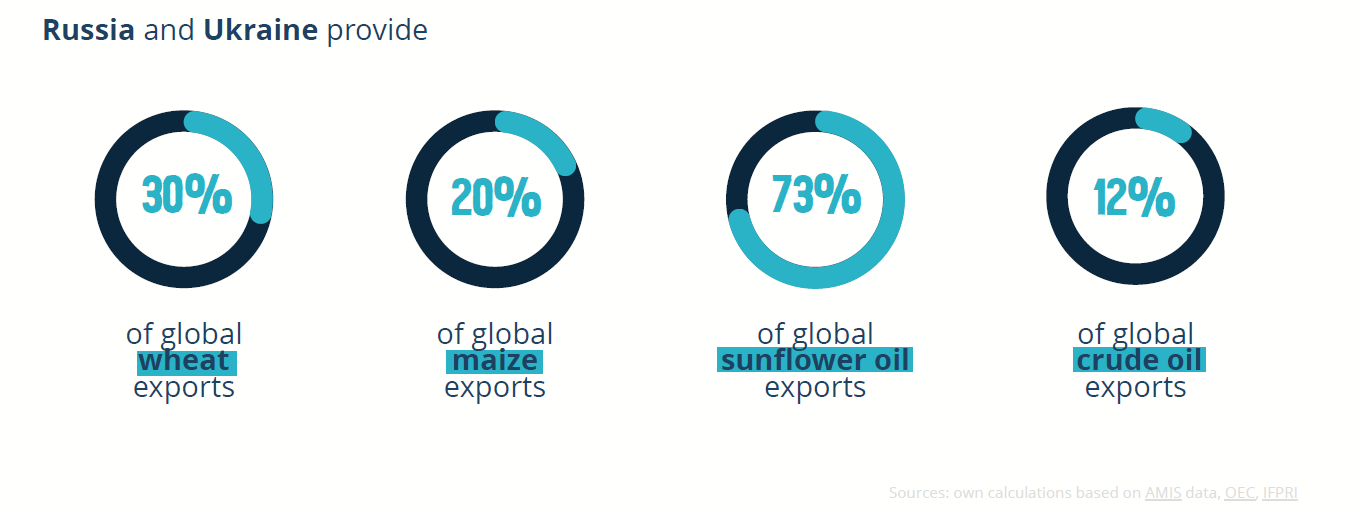Ukraine and Russia are among the world's largest producers of a range of staples.

© WFP, 2022: The conflict in Ukraine in the current global context. An overview.
A substantial number of countries in the MENA region are heavily dependent on wheat imports to feed their burgeoning populations. With a cost-of-living crisis already well underway before the beginning of the war, further hikes in prices threaten to push large parts of the population into food insecurity and hunger.

© FAO, 2022: Technical Briefing to FAO Members on The impact of COVID-19 and the War in Ukraine on the Outlook for Food Security and Nutrition
